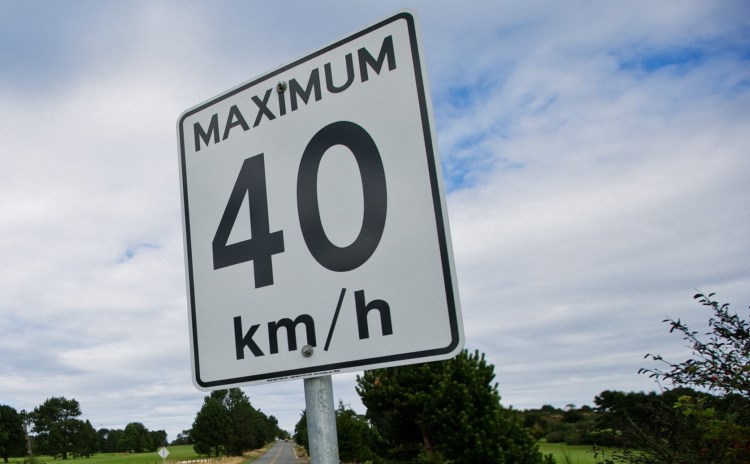VANCOUVER — The B.C. government has rejected two measures that municipalities pitched with the goal of reducing vehicle speeds in residential areas, around parks and in school zones.
At last year’s Union of B.C. Municipalities conference, local governments put forward nearly 300 resolutions that reflected local concerns, about 150 of which were forwarded to the province for consideration.
One resolution, put forward by the City of Vancouver and supported by Victoria Mayor Lisa Helps, asked the government to consider amending the Motor Vehicle Act to allow municipalities and regional districts to institute blanket speed zones in residential areas.
The Ministry of Transportation and Infrastructure said municipalities are free to adopt lower speed limits within their borders using bylaws, but that it has no plans to change the Motor Vehicle Act to redefine the statutory speed limit.
“It was a pretty lukewarm response, which was obviously personally disappointing because I worked pretty hard on this motion,” said Vancouver Coun. Pete Fry, who noted that he had enthusiastic support from councils across the province.
“There was a real interest in seeing this done, and I think there may be some more communications work that needs to be done with the province to really explain why we need to get this Motor Vehicle Act amended to allow default speed limits in local government municipalities and regional districts.”
The idea was that on local streets municipalities would be able to make the default speed limit lower than the current statutory limit of 50 km/h.
Some local governments have already taken action.
Last year, Vancouver council voted in favour of moving ahead with a pilot project to lower the speed limit on certain side streets to 30 km/h. The pilot project is still being designed and staff are expected to report back to council this spring.
On Vancouver Island, the City of Campbell River has introduced a trial 40 km/h speed limit in two residential areas. In Victoria, the speed limit was lowered 40 km/h on downtown streets and on streets such as Richmond, Bay, Quadra, Fort and Southgate.
However, implementing lower speed limits more widely would be labour intensive and cost prohibitive for municipalities because of the need to install signs on every block. City staff have pegged the cost for Victoria at about $200,000.
“I think it is kind of a missed opportunity that it wasn’t taken up by the province, because it wasn’t asking them to do anything that was mandated, it just would have made it easier,” said Helps, who launched her 2018 re-election bid by promising to seek a default 30 km/h speed limit on all low-traffic neighbourhood streets.
Although the idea was not taken up, Fry still sees an opening in the ministry’s response where it talks about reviewing legislative, regulatory and policy frameworks to acknowledge all road users and transportation modes, and he doesn’t plan to give up on the initiative.
“We’re just going to have to work a little harder to convince them,” Fry said.
Helps said the province may have misunderstood the intention of the most recent resolution and agreed there’s room to negotiate.
“I think the whole point of all of this is to create safe, healthy and active communities and I think that the province, from all the things they’ve showed, they’re in support of safe, healthy and active communities, so it’s just maybe how we get there rather than whether we get there,” she said.
In another effort to change driver behaviour and reduce speeds in residential areas, playgrounds and school zones, the City of West Kelowna had asked the Union of B.C. Municipalities to lobby the province to allow local governments to independently implement photo radar on local roads.
The argument was that traffic speed enforcement is labour intensive and photo radar has proven effective in slowing down drivers.
The resolution stipulated that if a local government was to use photo radar, it would be at its expense.
The Ministry of Public Safety and Solicitor General was not inclined to give municipalities the authority to use photo radar, and said in its response that it is focusing on implementing intersection safety cameras at high-crash sites.
Since last summer, the province has upgraded red-light cameras at 15 intersections, and has plans to activate the rest by the end of March, starting with eight Metro Vancouver intersections coming online Feb. 24.
The program is a provincial initiative and is not operated by or delegated to municipalities; however, ticket-fine revenue is shared with municipalities.
— With files from the Times Colonist and Dan Fumano



